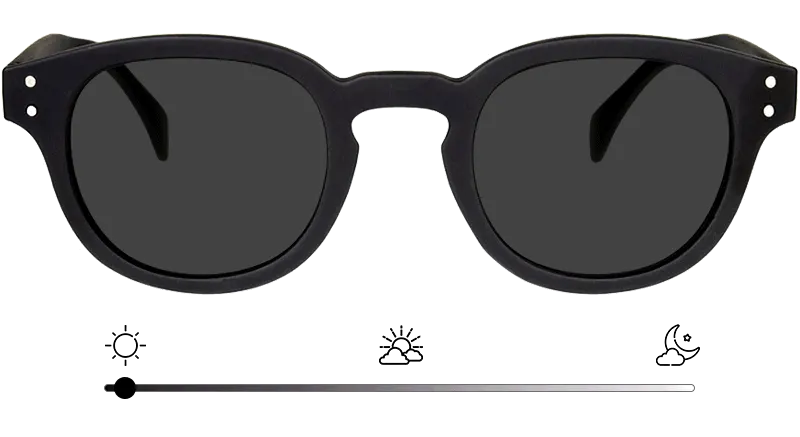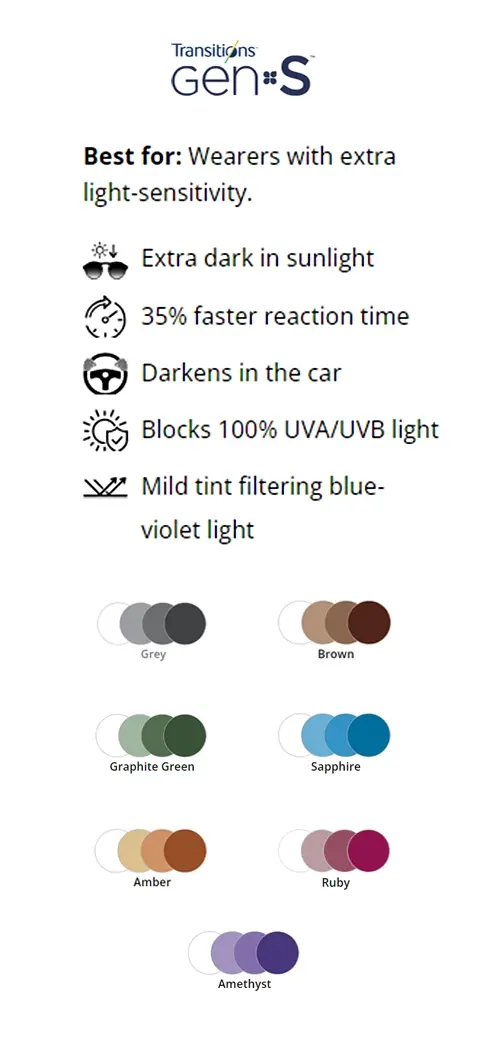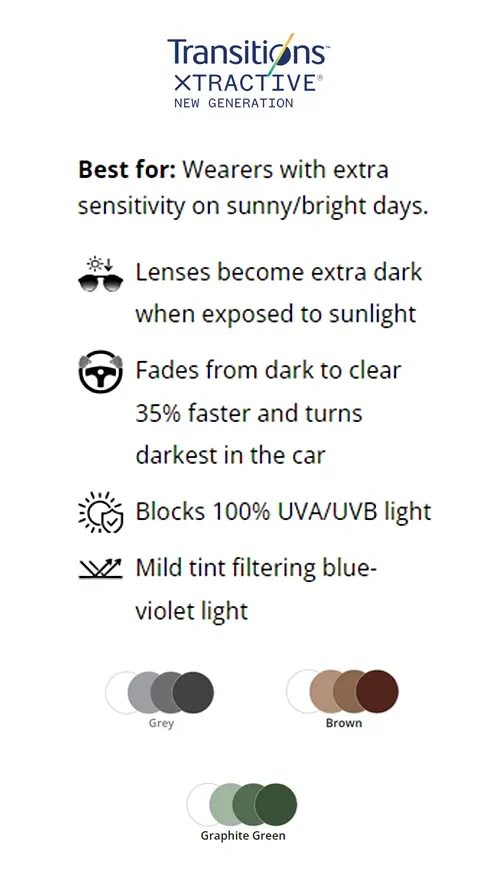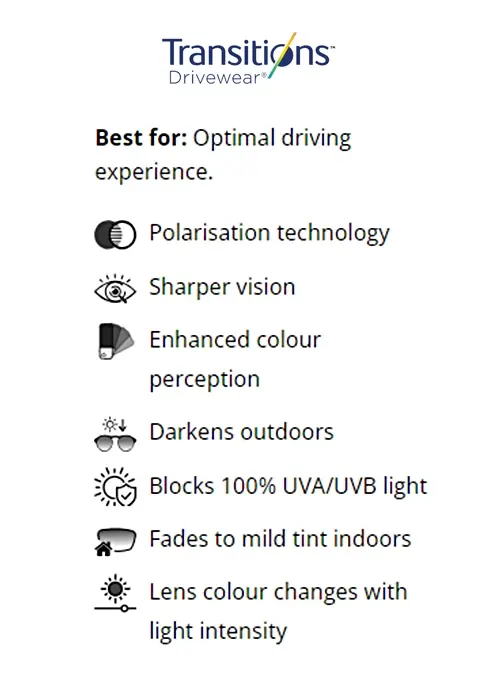Which transition lens colour is the best?
The best colour for transition lenses depends largely on how well it complements the frames you’ve selected and the purpose you’ll be using them for. Transition Gen S lenses are available in seven colours – grey, brown, graphite green, sapphire, amber, ruby and amethyst, providing many options. A wide variety of tints helps cater every style and offers certain benefits.
Grey tint – The classic grey colour goes well with every frame colour and is perfect for hiking, driving and water-related activities.
Brown tint – The evergreen brown complements many frame colours, such as green, brown and tortoiseshell patterns, effectively minimising the glare from bright sunlight.
Graphite green tint – The versatile green hue sits exceptionally well on frame colours, such as clear, black and tortoiseshell and is a perfect choice for enjoying outdoor sports.
Sapphire tint – The bold sapphire tint matches well with clear acetate frames of grey and black colours and is ideal to wear in misty conditions.
Amber tint – The warm amber shade pairs well with a tortoiseshell pattern, Havana, black and clear frames and is an ideal choice for driving.
Ruby tint – The visually striking ruby colour is a perfect match for black, silver, grey and gunmetal frame colours and appeals to those who love making bold fashion statement.
Amethyst tint – The vibrant hue of amethyst adds elegance to acetate frames of grey, black and crystal colour and is a flattering pick for those who like to stand out from others.
Steps to buy photochromic lenses at Feel Good Contacts
Step 1: Choose the glasses frames you wish to purchase and select 'Choose your lenses'.
Step 2: Select the lenses which best describe what you will be using your glasses for the most.
Step 3: Enter your prescription details, “Upload the prescription” or select 'Send later'.
Step 4: Select ‘Light adaptive lenses’ under the type of lenses you want.
Step 5: Choose from four options, namely Light Reactive, Transitions Gen S, Transitions XTRActive, Transitions Drivewear and the lens colour.
Step 6: Choose your lens package and coating, then ‘Add to Basket’.
Feel Good Contacts stocks everything from contact lenses to solutions and sunglasses to prescription sunglasses to cater to all your eye care needs in one place.

 Offers
Offers Account
Account
 Favorite
Favorite
 Basket
Basket

 OFFERS
OFFERS





















